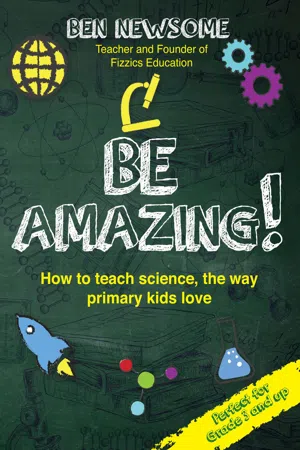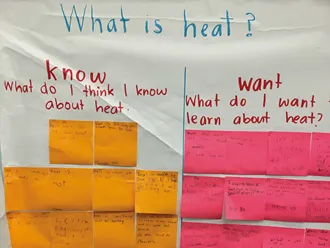
- English
- ePUB (mobile friendly)
- Available on iOS & Android
About this book
From engaging science experiments, effective role-play scenarios and useful digital technologies through to intriguing Maker spaces, colourful science fairs and community collaboration in your school, there are so many ways that you can be the spark that ignites a passion in students for understanding how the world works. This book takes you through the practical and realistic ways you can teach the kind of science that kids care about!
Discover how to address students' science misconceptions, teach science with limited resources and ensure primary students can work to the scientific method in fun challenges where they can explore science in meaninfgul ways they'll remember.
It's time to reinvigorate your love of teaching and bring about sustained active learning. Your classroom can become a glowing example of how to engage students in STEM and a beacon for the greater community.
It's not just about 'teaching'... your job is to inspire!
Frequently asked questions
- Essential is ideal for learners and professionals who enjoy exploring a wide range of subjects. Access the Essential Library with 800,000+ trusted titles and best-sellers across business, personal growth, and the humanities. Includes unlimited reading time and Standard Read Aloud voice.
- Complete: Perfect for advanced learners and researchers needing full, unrestricted access. Unlock 1.4M+ books across hundreds of subjects, including academic and specialized titles. The Complete Plan also includes advanced features like Premium Read Aloud and Research Assistant.
Please note we cannot support devices running on iOS 13 and Android 7 or earlier. Learn more about using the app.
Information
- Just what is going on inside your students’ heads?
- How much do they really know about a topic?
- Will it affect what they take away from your lesson?
- You can’t assume that the children in the room actually know what you’re talking about.
- Students might have a completely different idea of a scientific process before the lesson. Remember, it’s not that long ago that people thought the world was flat, that atoms didn’t exist and that the universe revolved around the Earth. And there are parts of the world that still cling to these notions.
- Any prior learning could have produced a series of ‘half-truths’, where the kids get only part of the previous lesson and bring this into the next. This might mean that critical information from your previous science lesson is missing, bringing in the potential for the students to get lost very quickly with the new content.

Table of contents
- Testimonials
- Author’s Note
- Greetings!
- Introduction: Primary challenges and opportunities
- 1. Understanding the students
- 2. Priming the classroom
- 3. Unleashing teaching tactics
- 4. Leveraging technology
- 5. Exploring social media
- 6. Engaging the community
- You can do this!
- Support resources
- References
- Appendices
- Acknowledgements
- About the author